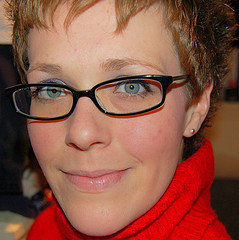|
Become a Savvy Reader about Complementary Medicine When it comes to complementary and alternative medicine (CAM), the power shifts into the consumer's hands quite a bit. CAM's philosophy treats the person as a whole, a responsible individual, with a very strong say over the treatment and care of one's own body. So, you'll be doing the work! (The research, the discovery, etc.) To increase your study "savvy," know the strengths and weaknesses of studies available for you to read. All studies are subject to design flaws and lack of objectivity. Here's what you can to do to sift the data that's given: Ask yourself these questions-- 1. Who is promoting this study? Was a financial incentive involved? 2. How was the study conducted?--only men, only women, only certain age groups? I really appreciated that about the NCCAM (National Center for Complementary and Alternative Medicine) studies at the link below; it clearly lists gender and number of people involved. 3. Were the study conclusions definitive or were they ambiguous? 4. How many people participated in the study? Finally, 5. Are the clinical results really applicable in my own life? 
Navigate the Information Highways with SavvyOr, Step 1: Outsource like crazy! To find alternative health news, use not only the Internet, but also printed materials, including books and published studies.(See site below for NCCAM studies, both in progress and completed.) Step 2: Find a Complementary and Alternative Medicine (CAM) advocate. Ask your primary care doctor for a referral to a CAM practitioner. More and more hospitals, clinics, and professional organizations offer responsible CAM services. As long ago as 1998, more than 60 percent of conventional doctors were recommending alternative therapies to their patients. It's sure to be more today! Get a referral from someone you already know and trust. If your primary care provider has a negative opinion, it may help to refer them to Dr. Eisenberg's article contained in the next step. Step 3: Inform your primary care provider that you are using CAM therapies. To help you broach the subject, Dr. David Eisenberg's (Harvard Medical School) article may help if he or she has a negative opinion. Follow this address from the ANNALS OF INTERNAL MEDICINE... http://www.accessmylibrary.com/coms2/summary_0286-3095131_ITM Step 4: Get it in writing. With any conventional or CAM therapy, obtain clear--and preferably written--information. Details may include: - anticipated treatments - cost - whether or not this will be covered by your insurance - any possible side effects - all possible contraindications/reasons why therapy may not be effective on your particular condition - how you and clinician will determine you are better Step 5: Keep track. Keep a record or diary of treatments. Chart any changes in the frequency or severity of your symptoms on a scale of one to ten. Notify your therapist of unusual or adverse reactions immediately.
Alternative Health News online is Your OysterNow that you have some tools for reading study results and searching for CAM therapy, good journey! Take what you've learned. Take your health in your own hands. Take this path to the latest studies--both current and completed--by NCCAM, if you like. (Cut and paste in the search bar.) http://nccam.nih.gov/clinicaltrials/alltrials.htm You can search these clinical trials by condition or therapy. The information includes who is eligible, what type of method was used, and what they expected to prove--plus final conclusions. Return from Savvy Reader about Complementary Medicine to Healthy Alternative Solutions home page.
|
